Audi A7 vs Mercedes E Class – Which model is better for everyday use?
Two cars, one duel: Audi A7 meets Mercedes E Class.
Which one wins in performance, efficiency and value for money? Find out now!
Costs and Efficiency:
Looking at overall running costs, both models reveal some interesting differences in everyday economy.
Mercedes E Class has a minimal advantage in terms of price – it starts at 50500 £, while the Audi A7 costs 55000 £. That’s a price difference of around 4538 £.
Fuel consumption also shows a difference: Audi A7 manages with 1.20 L and is therefore evident more efficient than the Mercedes E Class with 1.50 L. The difference is about 0.30 L per 100 km.
As for range, the Mercedes E Class performs decisively better – achieving up to 116 km, about 48 km more than the Audi A7.
Engine and Performance:
Power, torque and acceleration say a lot about how a car feels on the road. This is where you see which model delivers more driving dynamics.
When it comes to engine power, the Audi A7 has a slight edge – offering 630 HP compared to 585 HP. That’s roughly 45 HP more horsepower.
In acceleration from 0 to 100 km/h, the Audi A7 is to a small extent quicker – completing the sprint in 3.40 s, while the Mercedes E Class takes 4 s. That’s about 0.60 s faster.
In terms of top speed, the Audi A7 performs a bit better – reaching 280 km/h, while the Mercedes E Class tops out at 250 km/h. The difference is around 30 km/h.
There’s also a difference in torque: Audi A7 pulls to a small extent stronger with 850 Nm compared to 750 Nm. That’s about 100 Nm difference.
Space and Everyday Use:
Whether family car or daily driver – which one offers more room, flexibility and comfort?
Seats: Mercedes E Class offers slightly more seating capacity – 5 vs 4.
In curb weight, Audi A7 is barely noticeable lighter – 1770 kg compared to 1810 kg. The difference is around 40 kg.
In terms of boot space, the Mercedes E Class offers slight more room – 540 L compared to 535 L. That’s a difference of about 5 L.
When it comes to payload, Mercedes E Class minimal takes the win – 640 kg compared to 600 kg. That’s a difference of about 40 kg.
Who wins the race?
The Audi A7 proves to be outperforms in nearly all aspects and therefore becomes our DriveDuel Champion!
Audi A7 is the better all-rounder in this comparison.

Audi A7
Audi A7
The Audi A7 effortlessly blends elegance with dynamic performance, making it a standout in the luxury coupe segment. Its sleek silhouette and innovative technology create a driving experience that is both exhilarating and sophisticated. With a focus on comfort and advanced features, the A7 caters to those who seek both style and substance in their automotive choice.
details @ audi-mediacenter.com
@ audi-mediacenter.com
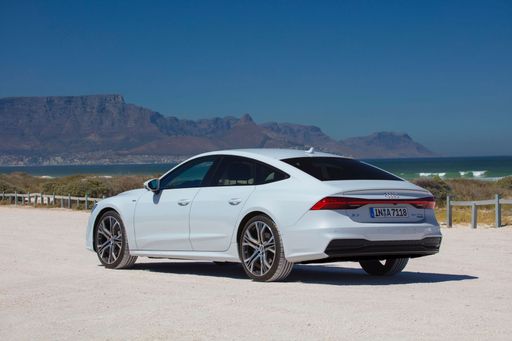 @ audi-mediacenter.com
@ audi-mediacenter.com
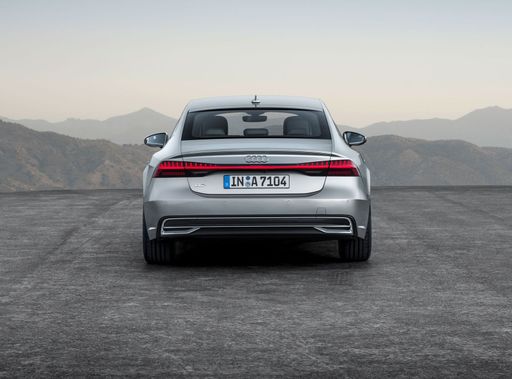 @ audi-mediacenter.com
@ audi-mediacenter.com
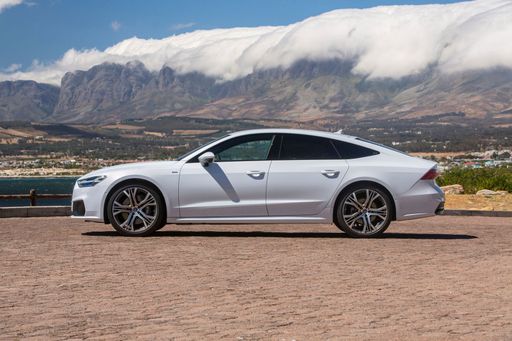 @ audi-mediacenter.com
@ audi-mediacenter.com
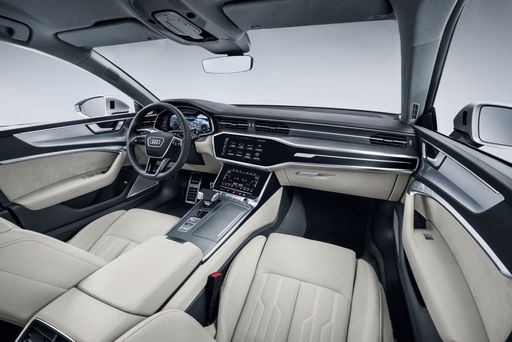 @ audi-mediacenter.com
@ audi-mediacenter.com
Mercedes E Class
The Mercedes-Benz E-Class Saloon epitomises sophistication and innovation, offering a seamless blend of elegant design and cutting-edge technology. Its refined interior ensures exceptional comfort, making every journey a luxurious experience. The driving dynamics are impressively balanced, providing both agility and smoothness, perfect for both city driving and long-distance cruising.
details @ group-media.mercedes-benz.com
@ group-media.mercedes-benz.com
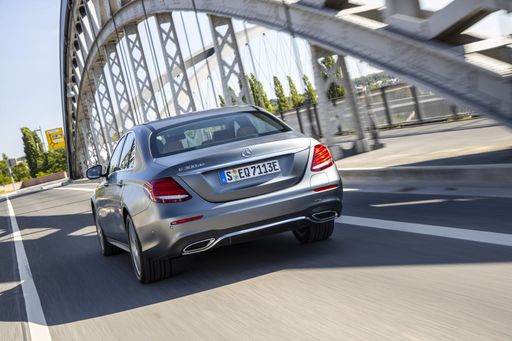 @ group-media.mercedes-benz.com
@ group-media.mercedes-benz.com
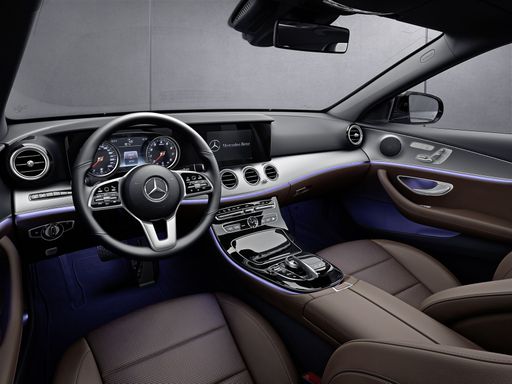 @ group-media.mercedes-benz.com
@ group-media.mercedes-benz.com

|

|
|
|
|
Costs and Consumption |
|
|---|---|
|
Price
55000 - 117900 £
|
Price
50500 - 119700 £
|
|
Consumption L/100km
1.2 - 12.2 L
|
Consumption L/100km
1.5 - 7.5 L
|
|
Consumption kWh/100km
-
|
Consumption kWh/100km
-
|
|
Electric Range
67 - 68 km
|
Electric Range
101 - 116 km
|
|
Battery Capacity
14.40 kWh
|
Battery Capacity
21.20 kWh
|
|
co2
28 - 276 g/km
|
co2
39 - 172 g/km
|
|
Fuel tank capacity
52 - 73 L
|
Fuel tank capacity
50 - 66 L
|
Dimensions and Body |
|
|---|---|
|
Body Type
Hatchback
|
Body Type
Sedan
|
|
Seats
4
|
Seats
5
|
|
Doors
5
|
Doors
4
|
|
Curb weight
1770 - 2150 kg
|
Curb weight
1810 - 2390 kg
|
|
Trunk capacity
380 - 535 L
|
Trunk capacity
370 - 540 L
|
|
Length
4969 - 5009 mm
|
Length
4949 - 4959 mm
|
|
Width
1908 - 1950 mm
|
Width
1880 mm
|
|
Height
1422 - 1424 mm
|
Height
1468 - 1480 mm
|
|
Max trunk capacity
1235 - 1390 L
|
Max trunk capacity
-
|
|
Payload
510 - 600 kg
|
Payload
530 - 640 kg
|
Engine and Performance |
|
|---|---|
|
Engine Type
Diesel MHEV, Petrol MHEV, Plugin Hybrid
|
Engine Type
Petrol MHEV, Plugin Hybrid, Diesel MHEV
|
|
Transmission
Automatic
|
Transmission
Automatic
|
|
Transmission Detail
Dual-Clutch Automatic, Automatic Gearbox
|
Transmission Detail
Automatic Gearbox
|
|
Drive Type
All-Wheel Drive, Front-Wheel Drive
|
Drive Type
Rear-Wheel Drive, All-Wheel Drive
|
|
Power HP
204 - 630 HP
|
Power HP
186 - 585 HP
|
|
Acceleration 0-100km/h
3.4 - 8.1 s
|
Acceleration 0-100km/h
4 - 8.5 s
|
|
Max Speed
245 - 280 km/h
|
Max Speed
222 - 250 km/h
|
|
Torque
370 - 850 Nm
|
Torque
320 - 750 Nm
|
|
Number of Cylinders
4 - 8
|
Number of Cylinders
4 - 6
|
|
Power kW
150 - 463 kW
|
Power kW
137 - 430 kW
|
|
Engine capacity
1968 - 3996 cm3
|
Engine capacity
1993 - 2999 cm3
|
General |
|
|---|---|
|
Model Year
2023 - 2024
|
Model Year
2024 - 2025
|
|
CO2 Efficiency Class
E, F, B, G
|
CO2 Efficiency Class
E, F, B, D
|
|
Brand
Audi
|
Brand
Mercedes-Benz
|
What drivetrain options does the Audi A7 have?
Available configurations include All-Wheel Drive or Front-Wheel Drive.
The prices and data displayed are estimates based on German list prices and may vary by country. This information is not legally binding.
